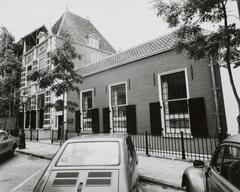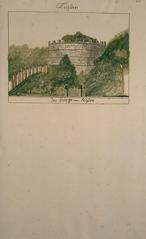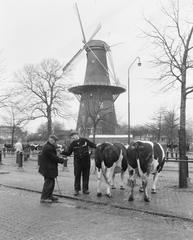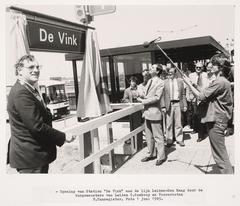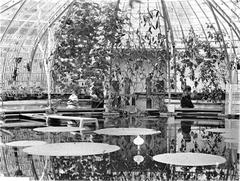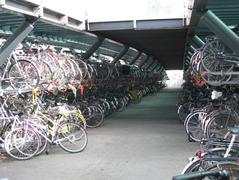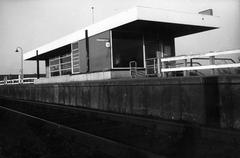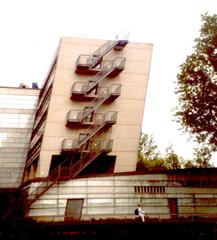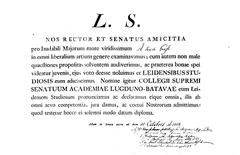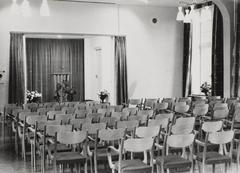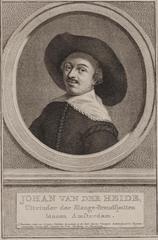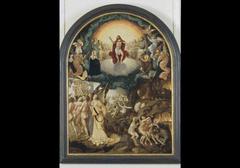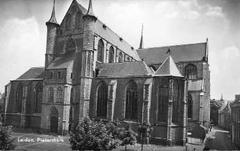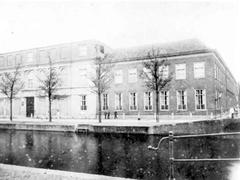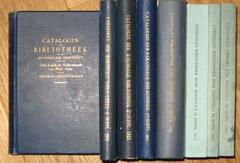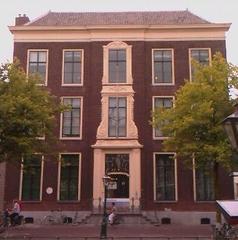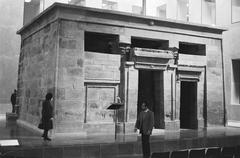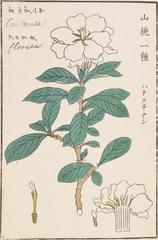
Zijlpoort Visiting Hours, Tickets, and Historical Sites in Leiden: Comprehensive Guide
Date: 04/07/2025
Introduction
Zijlpoort, majestically situated at the eastern edge of Leiden, Netherlands, is an enduring emblem of the city’s 17th-century heritage and Dutch Golden Age architecture. Built in 1667 by Willem van der Helm, the gate not only played a pivotal role in Leiden’s defenses but also stands today as a vibrant community hub and architectural marvel. This guide provides in-depth visitor information, including historical context, architectural features, practical tips, and how to make the most of your experience at Zijlpoort (Wikipedia; Travel4History; routesandrevelations.com).
Table of Contents
- Introduction
- Historical Background: From Fortification to Landmark
- Architectural Highlights
- Changing Functions and Preservation
- Visitor Information
- Visitor Experience and Practical Tips
- Zijlpoort in Leiden’s Festival and Cultural Life
- Comparisons: Zijlpoort and Morspoort
- Sustainability and Community Engagement
- Frequently Asked Questions (FAQ)
- Conclusion and Visitor Recommendations
- References and Further Reading
Historical Background: From Fortification to Landmark
Origins and Construction
Zijlpoort traces its roots to the Dutch Golden Age. Erected in 1667, it was designed by Willem van der Helm, whose work also includes the Morspoort. The gate replaced an earlier structure (Oude Zijlpoort), shifting eastward to accommodate Leiden’s urban expansion (Travel4History). Zijlpoort served as a key defensive gateway, controlling access via the Zijl River, which, together with the Oude Rijn, channels water into the city.
Architectural Significance
The Zijlpoort is a prime example of Dutch classicist architecture. Its façade, crafted from brick and natural stone, is adorned with sculptural embellishments by Rombout Verhulst—most notably, heroic lions bearing Leiden’s coat of arms and a sculpted head of Mars, the Roman god of war, signifying the gate’s defensive function. The historic clock by the Hemony brothers (1668) further enhances its historical value (Wikipedia; Travel4History).
Architectural Highlights
- Symmetry and Classicism: The gate’s parallelogram-shaped structure integrates seamlessly with the city wall and adjacent bridge, reflecting the classicist emphasis on symmetry and monumentality.
- Decorative Stonework: Pilasters, triangular pediments, and intricate reliefs define the Renaissance-inspired façade.
- Cupola: The rooftop cupola, a signature feature, historically served as a lookout and now provides a vertical accent along Leiden’s waterways.
- Sculptural Details: Heraldic symbols, armor, banners, and cannons communicate the city’s martial and civic pride (routesandrevelations.com).
Changing Functions and Preservation
Over centuries, Zijlpoort’s function evolved:
- 18th century: Meeting place for the “rederijkers” literary guild, later a school for underprivileged children.
- 19th century: Used as municipal storage.
- 20th–21st centuries: Major restorations preserved the gate, and since 1999, a brasserie occupies one of its annexes, blending heritage with contemporary use (Travel4History).
- Present: Recognized as a national monument (rijksmonument) since 1968 (Wikipedia).
Visitor Information
Visiting Hours
- Exterior Access: Zijlpoort is freely accessible 24/7 as a public monument.
- Brasserie and Event Spaces: The on-site brasserie usually opens daily from 10:00 AM to 10:00 PM, but hours may vary for events and holidays. Check ahead for specific schedules (visitleiden.nl).
Entry and Tickets
- Monument Access: Free—no tickets required for the exterior.
- Special Events/Exhibitions: Tickets or reservations may be needed for certain events, exhibitions, or guided tours (Leiden Tourism Official Website).
Accessibility
- Mobility: The site is wheelchair accessible, with ramps and smooth pathways. Some cobblestone streets nearby may require caution.
- Families: Benches, green spaces, and a nearby park (Ankerpark) make Zijlpoort suitable for families and children.
Guided Tours and Events
- Guided Tours: Offered seasonally through the Leiden Tourist Office (VVV Leiden Tourist Office). Zijlpoort is often included in city walking and cycling tours.
- Events: The gate hosts cultural activities, exhibitions, and live music, especially during Leiden’s festivals.
Getting There
- Walking: 15 minutes from Leiden Centraal Station (~1.2 km) along scenic canals.
- Cycling: Bike racks are available nearby; Zijlpoort is a popular stop on cycling routes (Ostrich Trails).
- Public Transport: Easily accessible via local buses.
- Car: Public parking is available in city garages; the immediate vicinity is best explored on foot.
Visitor Experience and Practical Tips
- Best Times to Visit: Early morning or late afternoon for optimal lighting and fewer crowds.
- Photography: The canal-side setting and classical details offer superb photo opportunities. Respect the monument and brasserie patrons (Solo Sophie).
- Dining: The brasserie inside Zijlpoort offers canal-side seating and hosts regular events.
- Safety: Leiden is generally safe. Basic precautions are advised.
- Accessibility: Flat, paved paths make the site suitable for wheelchairs and strollers.
Zijlpoort in Leiden’s Festival and Cultural Life
Zijlpoort is a lively venue during major events like Leidens Ontzet (October 3rd Festival) and the Rembrandt Festival, often featuring music, art, and culinary experiences (DutchReview). Its role as a cultural hub fosters community engagement and supports local artists and entrepreneurs (Travel Getaways).
Comparisons: Zijlpoort and Morspoort
Leiden’s two surviving gates, Zijlpoort and Morspoort, both date to the 17th century but differ in style and function. Zijlpoort’s elaborate ornamentation and integration with the city’s water management system make it stand out, whereas Morspoort is more austere. Visiting both offers insight into Dutch Golden Age urban design (routesandrevelations.com).
Sustainability and Community Engagement
Zijlpoort exemplifies community-driven tourism, balancing preservation with adaptive reuse. Events, local management, and sustainable practices—such as energy-efficient operations and waste reduction—ensure the gate’s legacy and benefit Leiden’s local economy (Sustainable Tourism Alliance).
Frequently Asked Questions (FAQ)
Q: What are Zijlpoort’s opening hours?
A: The exterior is accessible at all times. The brasserie is typically open 10:00 AM–10:00 PM (check for variations during holidays and events).
Q: Is there an entrance fee?
A: No, visiting Zijlpoort’s exterior is free. Some events or the brasserie may charge fees.
Q: Are guided tours available?
A: Yes, especially during tourist seasons and festivals. Book via the Leiden Tourism Office.
Q: Is Zijlpoort accessible for people with disabilities?
A: Yes, with ramps and paved paths; some nearby cobblestones require care.
Q: Can I combine my visit with other attractions?
A: Yes! The National Museum of Antiquities, Botanical Gardens, and Burcht van Leiden are all nearby (Live the World).
Conclusion and Visitor Recommendations
Zijlpoort is a must-see for history enthusiasts, architecture lovers, and travelers seeking authentic Dutch heritage. Its free access, scenic setting, and role as a cultural venue make it an essential Leiden experience. For updated hours and events, consult the official Leiden tourism board.
Plan your visit today:
- Download the Audiala app for immersive audio guides.
- Include Zijlpoort in walking or cycling itineraries.
- Explore nearby historical and cultural sites for a full Leiden experience.
References and Further Reading
- Zijlpoort (Leiden) Wikipedia
- Travel4History: Zijlpoort in Leyden
- routesandrevelations.com: Guide to Leiden Visit
- Lonely Planet: Zijlpoort Leiden Attraction
- visitleiden.nl: Plan Your Visit
- Sustainable Tourism Alliance: Impact of Tourism on Local Communities
- Live the World: Zijlpoort
- Ostrich Trails: Leiden Walking Tour
- Solo Sophie: Visit Leiden Guide
- Komoot: Hiking Around Leiden
- DutchReview: Things to Do in Leiden
- Travel Getaways: Connecting with Community
- Tourist Places Guide: Leiden Map













